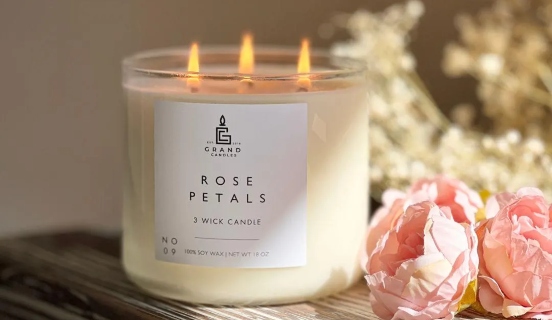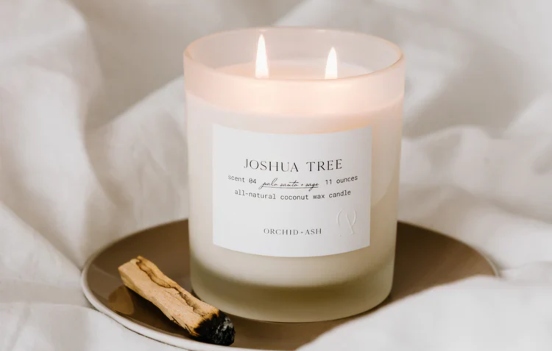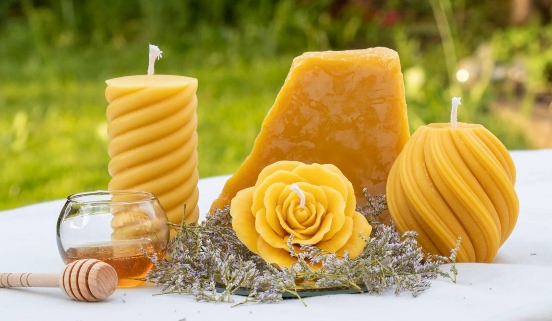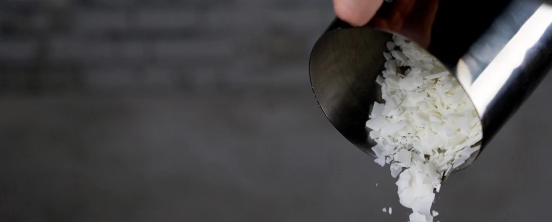Natural Candles: Types, Ingredients & DIY Tips
Natural candles are getting more popular, and it’s easy to understand why. They burn cleaner, don’t give off harmful chemicals, and use ingredients you can actually recognize, like soy wax, coconut oil, and real plant-based essential oils.
Traditional candles often use paraffin wax, which comes from petroleum. When burned, paraffin can release small amounts of chemicals that aren’t great for indoor air. If you burn candles often, switching to natural ones is a simple way to make your space feel better and smell better, too.
In this article, we’ll walk you through the different types of natural candles, the ingredients you’ll want to use (and avoid), how to make candles yourself, and where to buy good-quality supplies if you’re in Canada.
Types of Natural Candles
Not all candles are made the same. The type of wax used makes a big difference in how a candle burns, how long it lasts, and what kind of scent it gives off.
Soy Wax
Soy wax is made from soybeans and is one of the most common natural options. It’s affordable, easy to work with, and burns slowly. It holds scent pretty well too. Just make sure to buy non-GMO or 100% soy wax when possible, since some blends may have additives.


Coconut Wax
Coconut wax comes from pressed coconut oil. It burns very clean, looks smooth when it sets, and has one of the best scent throws out there. It’s also a sustainable option. Pure coconut wax is quite soft, though, so it’s often mixed with other waxes like soy to help it hold its shape.
Beeswax
Beeswax is made by bees and has a very light, natural honey smell. It burns the longest of all three and actually helps clean the air by releasing negative ions. Beeswax candles are more expensive, but they don’t need added scent to smell great.


Blended Waxes
Sometimes, waxes are mixed to get the benefits of more than one type. A popular combo is soy and coconut or soy and beeswax. Blends can give you a long burn, a good scent, and a smooth finish all in one.
Best Ingredients to Use
When making or buying natural candles, ingredients matter a lot. Here’s what you want and what to avoid.
- Wax: Stick to soy, coconut, or beeswax. Avoid paraffin wax, which can release toxins into the air.
- Essential Oils: Only use 100% pure essential oils. These are made directly from plants and are much safer than synthetic fragrance oils. Fragrance oils often contain chemicals you don’t want to breathe in.
- Wicks: Choose cotton, wood, or hemp wicks. Avoid anything with metal cores (like lead or zinc) or wicks coated in paraffin.
Tools You’ll Need
You don’t need fancy equipment to make candles at home. Here’s what helps:
- Jars or Containers: Reuse small glass jars, mugs, or buy new heat-safe ones. Just avoid thin or tall glasses that might crack.
- Wicks: Choose the right size wick for your container. You can get wick stickers to hold them in place.
- Heat Source: A crockpot or double boiler works well for melting wax safely.
- Stirring Tool: A spoon, stick, or spatula will do the trick.
- Something to Center the Wick: Use tape, a clothespin, or a straw across the top of the jar.
- Optional Tools: A thermometer (to check wax temp) and a ladle (for pouring wax neatly) are helpful but not essential.
How to Choose the Right Wick and Jar
Picking the right wick and jar combo is important for a smooth burn.
If your wick is too thin, the wax won’t melt across the top, it’ll just burn down the middle and waste wax (this is called tunnelling). If it’s too thick, the flame can get too big and overheat the jar or burn too fast.
Stick with small, sturdy containers. Baby food jars, teacups, or small mason jars work well. Avoid tall, narrow glasses or anything fragile.
Step-by-Step: Make Your Own Natural Candles
Here’s an easy method that’s been tested and works well, no need for a double boiler or complicated tools.
- In a crockpot, add 4 cups of soy wax and 1 cup of coconut oil. Let it melt on high heat for about 30–60 minutes.
- While it melts, stick your wick to the bottom of each jar using a sticker, glue, or melted wax.
- Once fully melted, carefully ladle the wax into your jars. Leave a little space at the top.
- Let the wax cool down a bit, around 55°C is ideal, then stir in 20 to 35 drops of essential oil per jar.
- Use a straw or clothespin to keep the wick centred while the wax sets.
- Let the candles sit undisturbed until they harden.
- Trim the wick to about ¼ inch. Let the candle cure for at least 48 hours before lighting it.
This amount makes about one large 4” x4” candle or three smaller ones (around 2.5” wide).
Extra Tips for Better Candles
- Add essential oils only after the wax has cooled slightly. If it’s too hot, the scent may burn off.
- Save leftover wax from old candles and reuse it, just make sure it was from a clean, natural candle.
- To clean out old jars, put them in the freezer for a few hours. The wax should pop out easily.
- On the first burn, let the wax melt all the way across the top. This helps the candle burn evenly every time after.
Where to Buy Natural Candle Supplies in Canada
If you’re in Canada, there are some good places to buy clean, natural candles or supplies to make your own.
Ready-Made Natural Candles
- Honey Candles – 100% beeswax, made in British Columbia.
- honeycandles.com
- The Scented Market – Soy wax candles with pure essential oils.
- thescentedmarket.ca
- Hygge Candle Co. – Soy candles with scents like lemongrass and sweet orange.
- hyggecandle.ca
- Natura Soy Candles – Based in Alberta, offers many eco-friendly soy blends.
- naturasoy.ca
- SOJA & CO. – Makes soy candles and wellness items with clean ingredients.
- sojaco.ca
DIY Candle Supplies
- Candlewic Canada – Carries wax, wicks, jars, and more in bulk.
- Voyageur Soap & Candle (BC) – Offers wax, oils, containers, and DIY kits.
- Canwax (Ontario) – A go-to for candle supplies, kits, and oils.
- Amazon.ca – Good for finding wickets, basic tools, and essential oil kits.
Making your own natural candles isn’t hard, and once you try them, you might not go back to store-bought ones. You get to control exactly what goes in them, avoid chemicals, and create scents you actually enjoy. Whether you’re doing it for yourself, as a gift, or even to sell at markets, it’s a satisfying project with simple ingredients and tools. And if you’d rather buy than DIY, Canada has plenty of good brands offering high-quality, natural candles you can trust.
